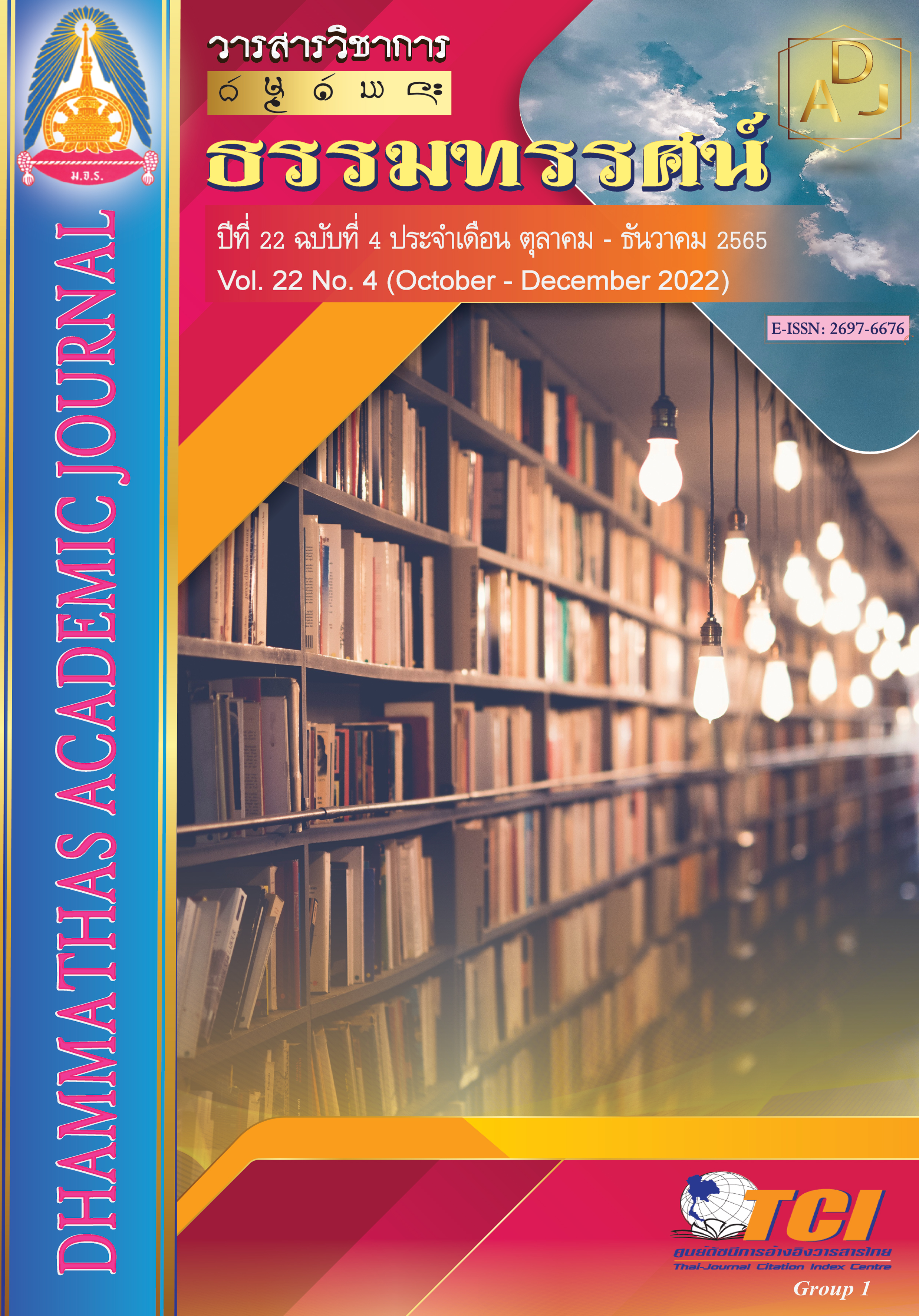Migrant workers: Privileges and Guideline of Myanmar workers, Mae Sot District, Tak Province
Main Article Content
Abstract
The objectives of this research were to; 1) study the reasons for hiring Burmese workers of entrepreneurs in Mae Sot District, Tak Province 2) to study the benefits of Burmese workers who have received in Mae Sot District, Tak Province 3) to study and find ways to manage Burmese workers in Mae Sot District, Tak Province, used a qualitative research method. The samples used in the study were 21 Burmese workers, 10 employers or owners, and 5 government officers.
The results of the study found that:
1. The cause or necessity of employing Burmese workers of entrepreneurs caused by a shortage of labor in the area, especially unskilled workers. Thai workers do not do these kinds of unskilled jobs because they are difficult and risky, together with Myanmar workers who are more diligent, patient, and uninterested in work than Thai workers.
2. Burmese workers are treated in accordance with the employment conditions required by law from time to time and the rights of migrant workers are treated unevenly as well.
3. Appropriate forms and methods of managing Burmese workers. Labors should be brought to work on a day-to-day basis. Come to work seasonally. There should be permission for employers to bring employees to register legally. By stipulating rules to limit the working area and the amount of time workers can move to work elsewhere or change to new jobs in different areas, and allow workers to work in labor-intensive industries.
Article Details

This work is licensed under a Creative Commons Attribution-NonCommercial-NoDerivatives 4.0 International License.
เพื่อให้เป็นไปตามกฎหมายลิขสิทธิ์ ผู้นิพนธ์ทุกท่านต้องลงลายมือชื่อในแบบฟอร์มใบมอบลิขสิทธิ์บทความ ให้แก่วารสารฯ พร้อมกับบทความต้นฉบับที่ได้แก้ไขครั้งสุดท้าย นอกจากนี้ ผู้นิพนธ์ทุกท่านต้องยืนยันว่าบทความ ต้นฉบับที่ส่งมาตีพิมพ์นั้น ได้ส่งมาตีพิมพ์เฉพาะในวารสาร วิชาการธรรม ทรรศน์ เพียงแห่งเดียวเท่านั้น หากมีการใช้ ภาพหรือตารางของผู้นิพนธ์อื่นที่ปรากฏในสิ่งตีพิมพ์อื่นมาแล้ว ผู้นิพนธ์ต้องขออนุญาตเจ้าของลิขสิทธิ์ก่อน พร้อมทั้ง แสดงหนังสือที่ได้รับการยินยอมต่อบรรณาธิการ ก่อนที่บทความจะได้รับการตีพิมพ์References
กรมประชาสัมพันธ์. (2558). นโยบายการจัดการปัญหาแรงงานต่างด้าว. กรุงเทพฯ: สำนักการประชาสัมพันธ์ต่างประเทศ กรมประชาสัมพันธ์.
นพนันท์ เดชกูลพรศิริ. (2554). การศึกษาปัจจัยสำคัญที่สนับสนุนให้แรงงานต่างด้าวเข้ามาทำงานในอุตสาหกรรมหลักในประเทศไทย. (วิทยานิพนธ์วิศวกรรมศาสตรมหาบัณฑิต). กรุงเทพฯ: มหาวิทยาลัยเทคโนโลยีพระจอมเกล้าธนบุรี.
ปังปอนด์ รักอำนวยกิจ. (2552). บทสังเคราะห์นโยบายยุทธศาสตร์การบริหารจัดการและแรงกดดันในการนำเข้าแรงงานต่างด้าวของประเทศไทย. กรุงเทพฯ: สำนักงานแรงงานระหว่างประเทศ.
มหาวิทยาลัยสุโขทัยธรรมาธิราช. (2562). การเคลื่อนย้ายแรงงานระหว่างประเทศ. เข้าถึงได้จาก https://www.stou.ac.th/Study/Services/Sec/60340(2)/move1.html
ศิริพงษ์ ลดาวัลย์ ณ อยุธยา. (2559). การจัดการแรงงานข้ามชาติเข้าเมืองผิดกฎหมาย 3 สัญชาติไทย: สำรวจทางกฎหมาย นโยบายและทางเลือก. วารสารรัฐศาสตร์และรัฐประศาสนศาสตร์, 7(1), 49-74.
สำนักงานจัดหางานแม่สอด. (2564). สถิติแรงงานต่างด้าวที่ยื่นขอรับใบอนุญาตทำงาน. เข้าถึงได้จาก http://tak.mol.go.th/labour_statistic
DeJong, G. F. & Fawcett, J. T. (1981). Motivations for migration: an assessment and a value-expectancy research model. In DeJong, G. F. & Gardner, R. W. (eds). Migration Decision Making: Multidisciplinary Approaches to Micro-level Studies in Developed and Developing Countries. New York: Pergamon.
Fielding, A. J. (2007). Migration and social mobility in urban systems: national and international trends. International Handbook of Urban Policy, 1, 107-137.
Jampaklay, A., Korinek, K. & Entwisle, B. (2007). Residential clustering among Nang Rong migrants in urban settings of Thailand. Asian and Pacific Migration Journal, 16(4), 485-510.
Long, J. (2005). Rural-urban migration and socioeconomic mobility in Victorian Britain. The Journal of Economic History, 65(1), 1-35.

